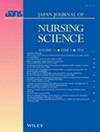A program for accelerating lactogenesis II using a breast pump shortly after cesarean section in Japan: A feasibility mixed-methods study
Abstract
Aim
To evaluate the feasibility of a breast stimulation program using a breast pump shortly after cesarean section (CS) to enhance the onset of lactogenesis II.
Methods
We used a convergent mixed-methods design. It provided an overall picture through quantitative results, which were complemented by qualitative findings. The results were presented using a joint display. Participants were full-term women who underwent CS at a regional perinatal hospital and nurse-midwives from January to March 2025. The program included: (1) providing information about breastfeeding after CS; and (2) providing breast pump–mediated nipple stimulation, starting within 6 h postpartum and continuing until day 2, at least four times daily under researcher supervision. Main outcomes focused on the feasibility of the program, including acceptability, practicality, and implementation. An eight-item questionnaire and open-ended questions were administered. Quantitative data were analyzed using descriptive statistics; qualitative data were analyzed using content analysis.
Results
Seven full-term women with planned CS and 29 nurse-midwives. Most used a breast pump four times within the first 24 h after CS. Women were satisfied with painless nipple stimulation and early milk expression. Both designs complemented each other, and the program was deemed acceptable based on early postpartum breast milk volume data. Identified challenges included pump operability, individual adaptation, and preparation time.
Conclusion
The breast stimulation program initiated shortly after CS was feasible, well accepted, and aspects of breast milk volume. A future randomized controlled trial should consider individual differences and adjustments in the frequency of breast pump usage.


 求助内容:
求助内容: 应助结果提醒方式:
应助结果提醒方式:


